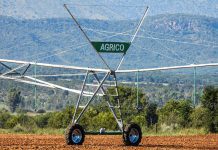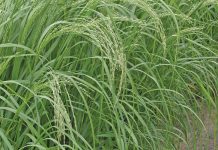After 15 years of testing a unique game management system on the 8 000ha Rolfontein Nature Reserve near the Vanderkloof Dam in the eastern Karoo, the Department of Tourism, Environment and Conservation in the Northern Cape is ready to introduce the concept on other reserves in the succulent Karoo and savanna biomes. According to Julius Koen, the department’s manager of scientific investigations and authorisations in the region, the system aims to restore veld resilience by simulating historical game feeding patterns. “The general aridity of the region – periodically broken by above-average rainfall years – demands specific management techniques, whether a property is fenced for livestock or game farming. But while farm animals can be easily rotated through camps, game can’t. That’s why going back to natural game grazing patterns could benefit the long-term sustainability of game ranches in arid areas,” he says. What history shows Before designing a workable system, the researchers had to discover what happened before the region was settled.
Historical records show many game species were widely distributed in the arid interior. Some not normally associated with dry areas, such as impala and roan antelope, were actually described for the first time within the boundaries of the present Northern Cape. “However, water-dependent species could not survive without access to dependable water sources, so most species were associated with permanent water sources such as the Vaal and Orange Rivers, fountains and springs,” Koen says. Long-established patterns of movement F rom these water points, he suggests, the game followed localised rainfall events for the new vegetation around temporary pans or rivers. Such rains probably attracted large herds, resulting in pressure on the vegetation or even localised overgrazing. Vagrant species not normally associated with arid environments could also have extended their ranges into these areas during seasons of good rainfall.
Ultimately, says Koen, the deteriorating veld would have forced the animals to move away in search of better grazing or browsing, resulting in a rest period of months or even years for the used vegetation. “It’s possible the veld has adapted to these alternating periods of heavy utilisation and recovery, and the vegetation’s inherent resilience may even depend on this pattern.” A system that mimics nature Historical springbok migrations over huge expanses of the Karoo, Bushmanland and Namaqualand could have resulted from a search for new grazing. The trampling and grazing would have had a severe influence on the vegetation for short periods. “Our system simply tries to mimic this ancient pattern, placing pressure on the veld through heavy grazing followed by a long rest,” says Koen. “To do this, we let the herds multiply until the veld is reasonably overstocked. Then we cull drastically, leaving only core breeding groups that are allowed to recover over a number of years. By carefully monitoring game numbers, habitat preferences and vegetation, we have continually improved veld condition and grazing capacity from the original overgrazed situation,” he explains. Benefits of continual evaluation To stay abreast of trends in veld condition, it’s critical to annually evaluate veld condition, as well as grazing and browsing components. “That helps with decisions such as when to cull so the veld is not pushed over its threshold. You can’t reduce numbers on an ad hoc basis.
We work on the principle that carrying capacity varies from year to year, and currently we use the livestock norm for the area, 18ha per livestock unit, as a basis. When we reduce game, we go down to between 50% and 60% of the carrying capacity. “Obviously the system has pros and cons. Game is removed every three to four years, which could influence the cash flow of ranchers who rely on a steady income. We could set annual limits for off-take such as trophy-hunting, but we want to maintain a longer-term trend of increased pressure on the vegetation followed by a rest period. “One benefit of the system is that there is no regular disturbance of the game, which means tamer animals and no disruption of other management and tourism activities,” says Koen. Contact Julius Koen on (053) 807 4845 or fax (053) 831 3530. |fw








